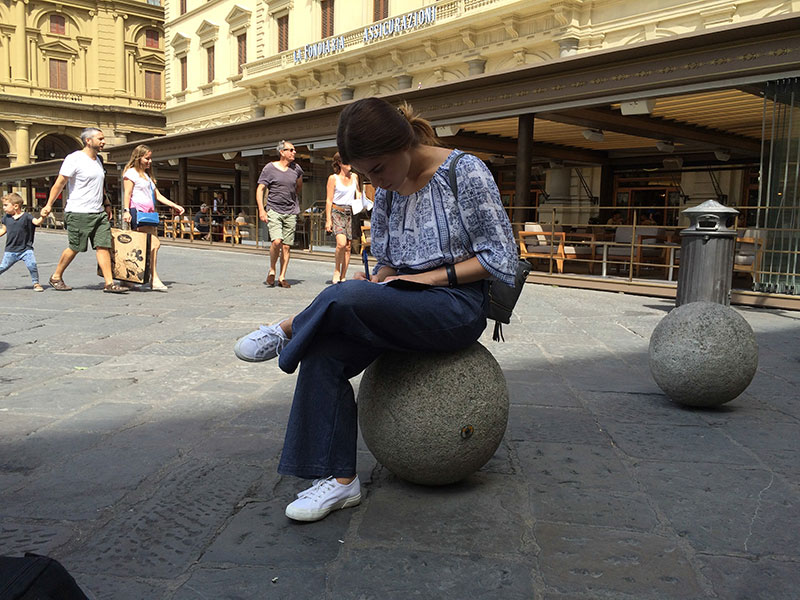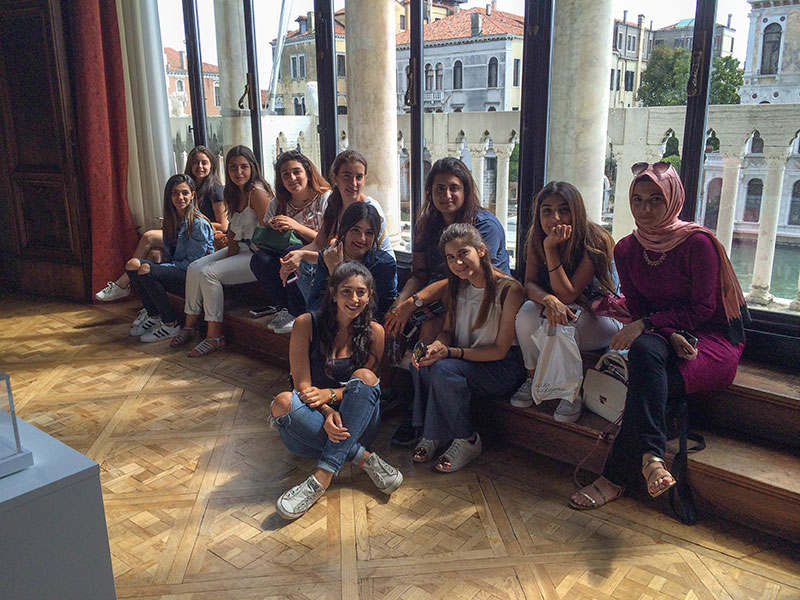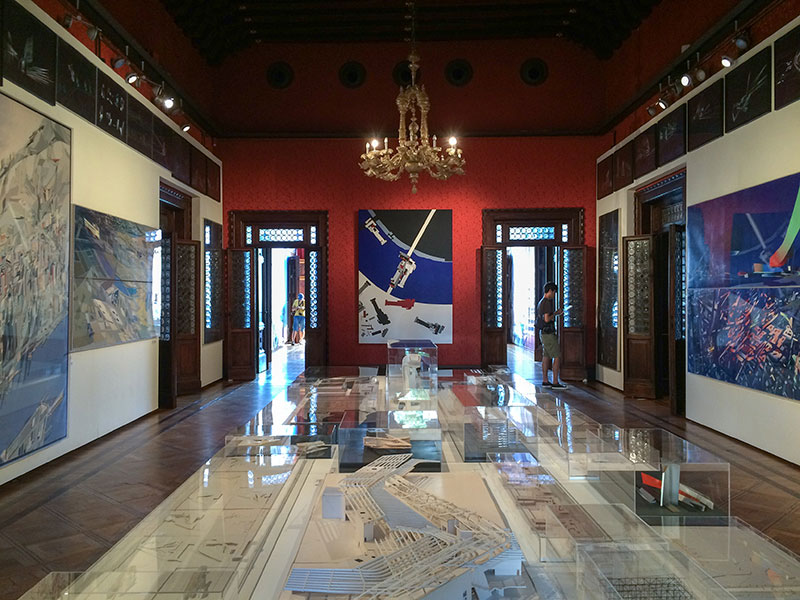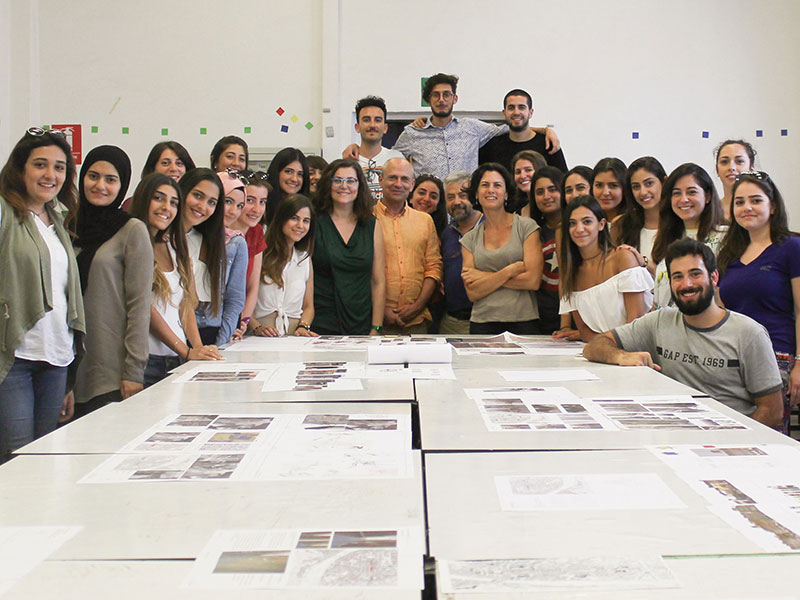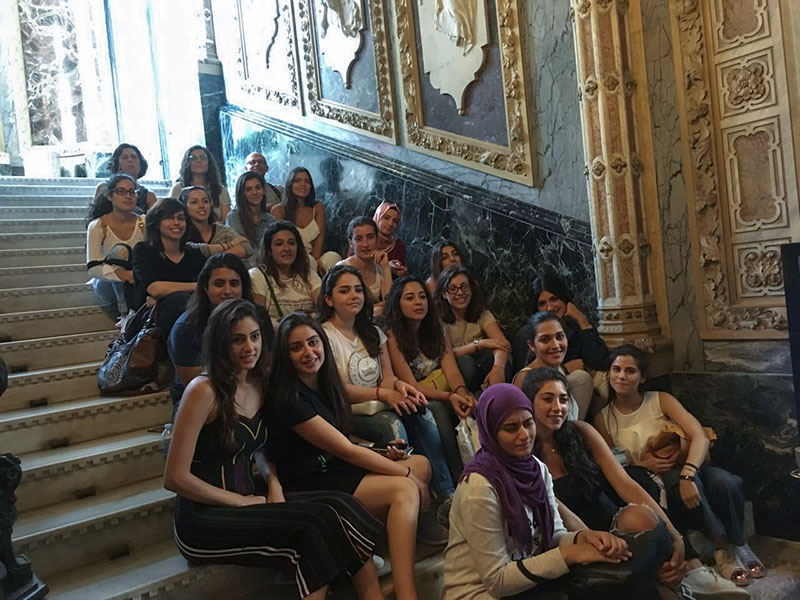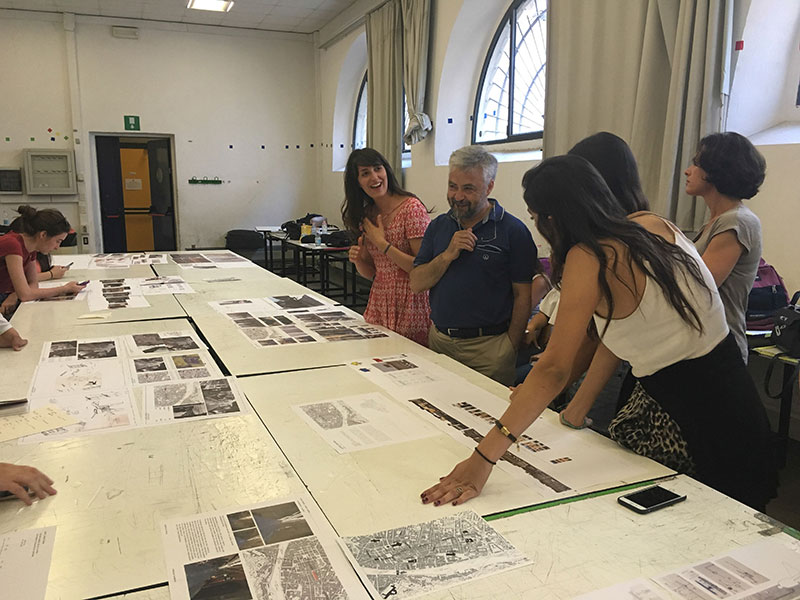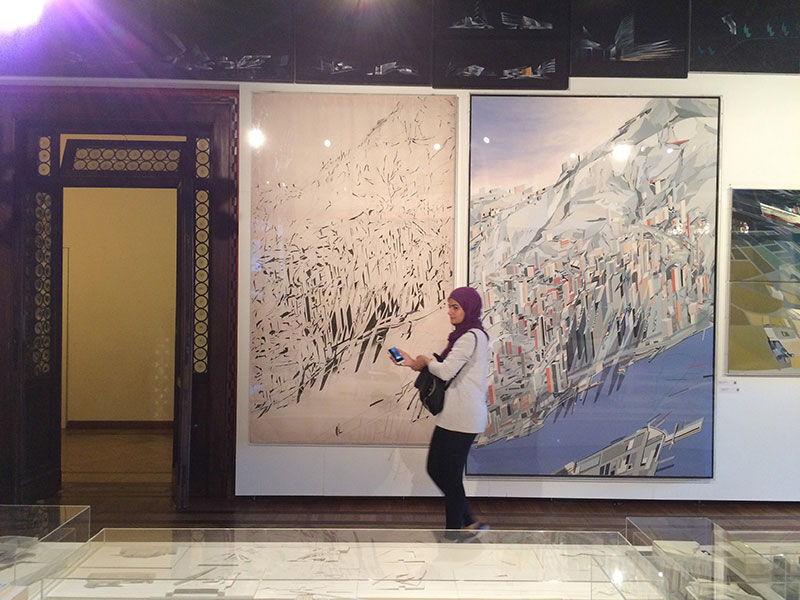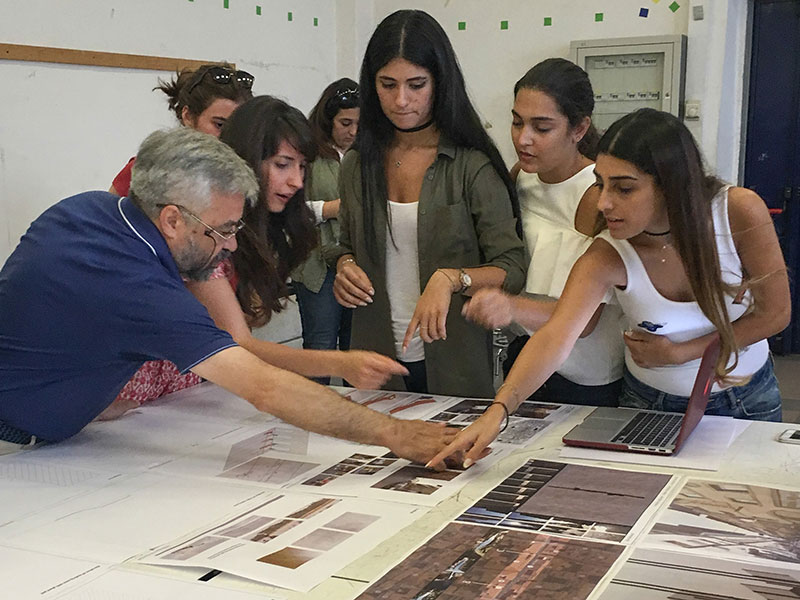Urban Interiors
The International Studio course in the Department of Architecture and Interior Design took 20 LAU students to Florence, Italy this July. There they collaborated with their Florentine peers from the University of Florence (Department of Architecture) to design light-touch, but impactful interventions in a city rich with architectural heritage.
The collaboration was borne out of a meeting between Luisa Bravo, a visiting professor last year at LAU who is now at the University of Florence, and Pierre Hage-Boutros, Associate Chair of the Department of Architecture and Interior Design at LAU. The workshop’s aim was to challenge students to think about how urban interiors and facades can shape and add value to the city’s streets and people. Shop windows were a natural choice to explore this idea according to Hage-Boutros. “The windows were a starting point,” he explained, “Most of the students from Beirut were interior architects…so we thought windows because there is an interface between the inside and outside.”
The guidelines were meant to be loose however and students had the freedom to play with the main concept behind the workshop. “We let them react to the site,” said Hage-Boutros, “apart from the fact that they needed small interventions with a big impact.”
Students were divided into eight groups and teamed up with the four Florence University students participating in the workshop to discover, discuss, define a narrative and come up with an innovative proposal for the shop windows that line the city center’s streets. The projects were then reviewed by a panel including Hage-Boutros and his colleague Sophie Khayat, as well as Luisa Bravo and Assistant Professor Guiseppe de Luca from the host university. Chiara Bocchio, a representative from UNESCO also contributed to the workshop and the review panel as Florence’s UNESCO World Heritage Center status was a key element in the workshop.
The convergence of historical and modern Florence was a major source of inspiration for the project brief. Florence is a “finished city” as Hage-Boutros put it, steeped in history and ancient buildings so making dramatic changes to the cityscape difficult, if not impossible. This heritage is also one of the main reasons Florence is a tourist magnet, teaming with people year-round.
Many of the locals live outside the center and commute into work in the many shops, museums and restaurants that cater to visitors, creating a divide between locals and those just passing through. In response to this reality, the workshop also addressed the question of how much any city can assimilate the new and unfamiliar. “In Florence you still have people who live there so you have the layer of the dwellers and the layer of the tourists that are parallel,” Hage-Boutros said.
The students were living out this question in their exchange with the University of Florence students. “Working with people from a different place and different background really benefitted me,” said Dana Naamani a final year student in Interior Architecture at the Byblos campus. “When you work in a team with people who have been raised in a different country with a different culture and study at a different university [you see how] everyone perceives things differently. That was the best part of the experience for me.”
Whereas LAU students can approach projects in Lebanon with innate knowledge of the place and its ethos, this time they had just five days to get to know a street and the life within it before creating a project tied to their own personal experience. For Hage-Boutros this fresh perspective “was useful, because in some cases it gave them insight.”
In finding their own narratives and tackling the questions in the brief, students were encouraged to engage with the use of public spaces in the city. The historical buildings, once belonging to influential families often incorporated benches, fountains etc. for the city-dwellers. The modern city equally has the potential to create interaction through public spaces.
One project brought this idea to life by incorporating a water fountain of elongated tubes into the chic shop-fronts, reflecting the old style of the wealthy providing for the public. “This is the role of public space - to put people together,” Hage-Boutros said, “It’s important because its space you can appropriate and make your own but it’s still not only yours.”
After exploring their own ideas in the workshop, students had the opportunity to be inspired by the work featured at the renowned international exhibition, the Venice Architecture Biennale. “It was the first time I went to an [architecture] exhibit where you can interact with displays,” Noorhan el-Hariri, also a final year Interior Architecture student said of the experience. “I really liked that there were a couple of architects and countries that did something linked to the Arab world…and how they analyzed, related and connected things and studied every single detail. I learned from that a lot.”
Students will show their own work at an exhibition of the projects at LAU in mid-September.
